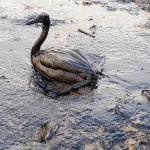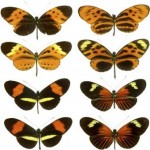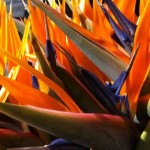Kinds Of Sea Turtles
Discover the kinds of sea turtles swimming about! There are seven recognized species of sea turtles: the leatherhead turtle, the hawksbill turtle, the green turtle, the loggerhead turtle, the flatback turtle, olive ridley and Kemp’s ridley turtle. The leatherback is in what is known as the Family Dermochelyidae, and the six other kinds of sea turtles are in the Family Chelonidae.
The leatherback is the worldÃs largest turtle, weighing in at between of 360kg (800lb) and 590kg (1,300lb). Its fore-flippers are extremely long, with a span of about 2.7m (9ft). It has no horny shields on its shell, no scales and no claws. The carapace resembles hard rubber and has three longitudinal ridges. Leatherbacks feed mainly on jellyfish; a diet suited to their weak, scissor-like jaws.
Chelonidae is the larger of the 2 families of marine turtles; containing the six of the seven different kinds of sea turtles apart from the leatherback. These turtles are all generally found in tropical and subtropical waters. All have non-retractile heads and limbs. The forelimbs are modified into long, paddle-like flippers with one or two claws. All of these kinds of sea turtles swim by making wing-like beats of the foreflippers.
One of the differences between these six kinds of sea turtles is that on land, the green turtle moves particularly awkwardly, heaving itself forward with both flippers simultaneously, whilst the others move with alternating limb movements; as four-legged animals generally do.
All six of these kinds of sea turtles have become specialized for different niches and diets, to compensate for the overlap of their ranges. Green turtles are herbivorous. Their jaw surfaces are serrated; perfect for munching on seaweed and sea grasses. Green turtles may also eat jellyfish and some crustaceans occasionally. Good grounds for feeding, where there are plentiful and varied pastures of underwater plants, are usually situated a long way away from the most desirable nesting beaches, so green turtles’ migratory habits have evolved in an astounding manner.
These kinds of sea turtles are now endangered species, and the entire population has gradually been completely wiped out in some regions even though it is still relatively safe in others. These kinds of sea turtles have unfortunately been exploited for their eggs, hides and meat, and the fact that they always come back to nest in the same place every year has made it more likely for them to become victims. However imports are now banned in several countries as exploitation becomes more strictly controlled.
The flatback turtle, which is closely related to the green turtle, is slightly smaller and resides off the North Australian coast.
The loggerhead turtle has a wide, chunky head which houses very powerful jaws. It can crush even hardshelled prey and feeds on crabs and molluscs. The loggerhead also feeds on sponges, jellyfish and aquatic plants.
Olive ridley or Pacific ridley is small and lightly built for a sea turtle. It feeds on crabs, jellyfish, snails, small shrimp and fish; which it crushes with strong jaws. Like its close relative Kemp’s ridley, these kinds of sea turtles breed every year and always return to the same nesting beaches.
The hawksbill’s extremely beautiful carapace is the reason for the species being endangered – it makes the very best tortoiseshell. The carapace on these kinds of sea turtles is serrated at the back and has particularly thick horny plates.
Imports are banned in quite a few countries now, and conservation controls have finally been introduced, although the vast amount of hunting that has taken place over the years has seriously taken its toll. The hawksbill has a tapering head which is ideal for searching out its favourite food of molluscs and crustaceans; in reefs and rocky crevices.






